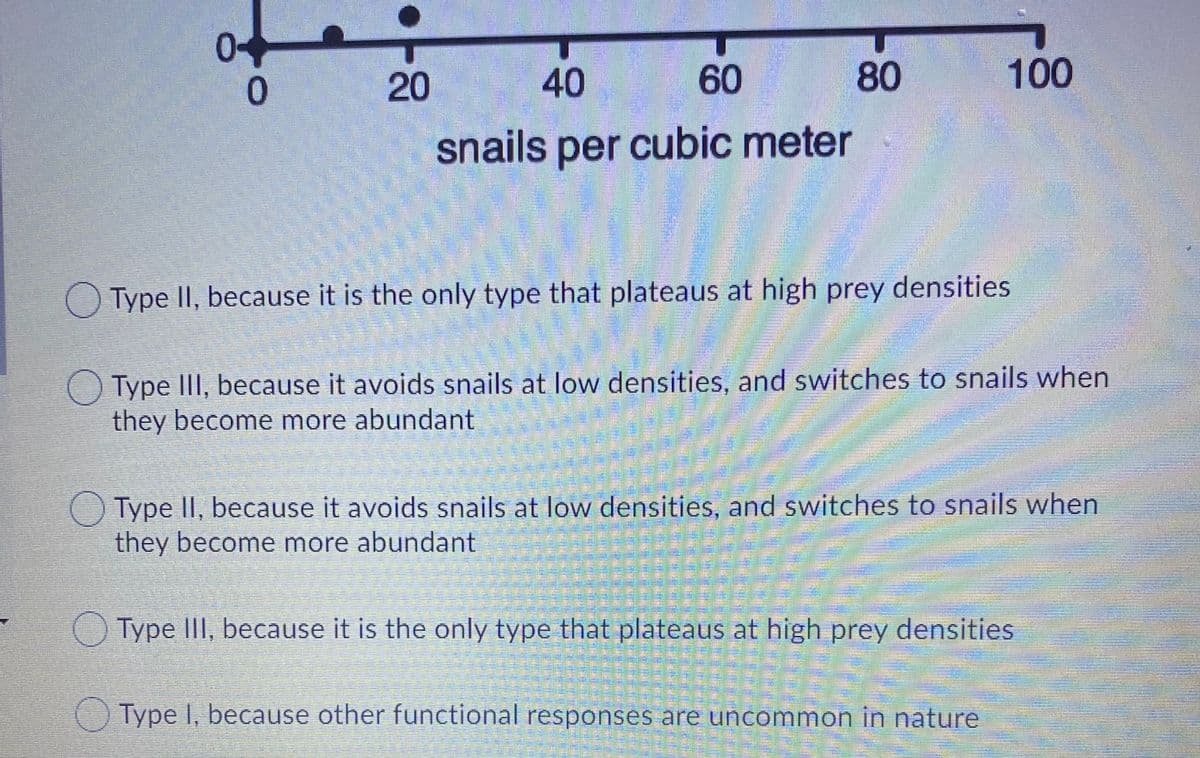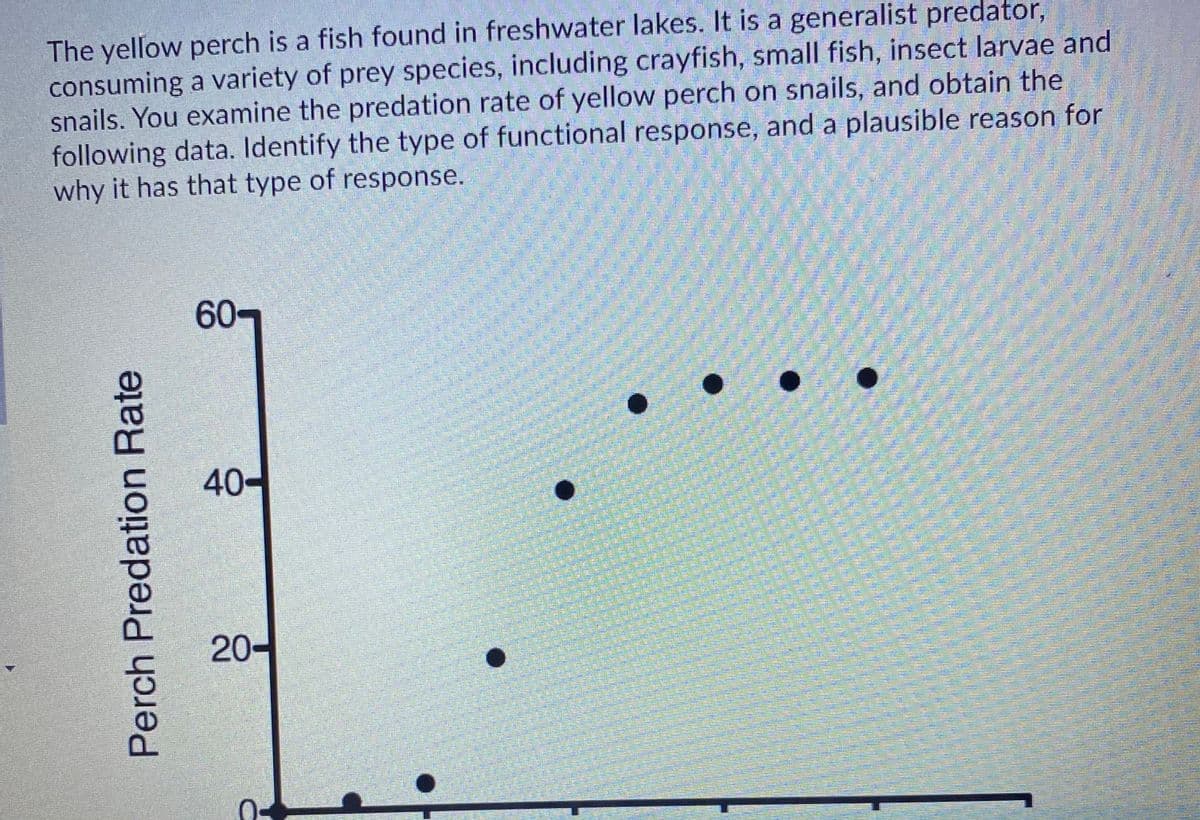O Type II, because it is the only type that plateaus at high prey densities O Type III, because it avoids snails at low densities, and switches to snails when they become more abundant O Type II, because it avoids snails at low densities, and switches to snails when they become more abundant O Type III, because it is the only type that plateaus at high prey densities Type I, because other functional responses are uncommon in nature
O Type II, because it is the only type that plateaus at high prey densities O Type III, because it avoids snails at low densities, and switches to snails when they become more abundant O Type II, because it avoids snails at low densities, and switches to snails when they become more abundant O Type III, because it is the only type that plateaus at high prey densities Type I, because other functional responses are uncommon in nature
Biology Today and Tomorrow without Physiology (MindTap Course List)
5th Edition
ISBN:9781305117396
Author:Cecie Starr, Christine Evers, Lisa Starr
Publisher:Cecie Starr, Christine Evers, Lisa Starr
Chapter16: Population Ecology
Section: Chapter Questions
Problem 6SQ
Related questions
Question

Transcribed Image Text:of
20
40
60
80
100
snails per cubic meter
Type II, because it is the only type that plateaus at high prey densities
Type IlI, because it avoids snails at low densities, and switches to snails when
they become more abundant
Type II, because it avoids snails at low densities, and switches to snails when
they become more abundant
O Type III, because it is the only type that plateaus at high prey densities
Type I, because other functional responses are uncommon in nature

Transcribed Image Text:The yellow perch is a fish found in freshwater lakes. It is a generalist predator,
consuming a variety of prey species, including crayfish, small fish, insect larvae and
snails. You examine the predation rate of yellow perch on snails, and obtain the
following data. Identify the type of functional response, and a plausible reason for
why it has that type of response.
60-
40-
20-
Perch Predation Rate
Expert Solution
This question has been solved!
Explore an expertly crafted, step-by-step solution for a thorough understanding of key concepts.
Step by step
Solved in 3 steps

Knowledge Booster
Learn more about
Need a deep-dive on the concept behind this application? Look no further. Learn more about this topic, biology and related others by exploring similar questions and additional content below.Recommended textbooks for you

Biology Today and Tomorrow without Physiology (Mi…
Biology
ISBN:
9781305117396
Author:
Cecie Starr, Christine Evers, Lisa Starr
Publisher:
Cengage Learning

Human Biology (MindTap Course List)
Biology
ISBN:
9781305112100
Author:
Cecie Starr, Beverly McMillan
Publisher:
Cengage Learning


Biology Today and Tomorrow without Physiology (Mi…
Biology
ISBN:
9781305117396
Author:
Cecie Starr, Christine Evers, Lisa Starr
Publisher:
Cengage Learning

Human Biology (MindTap Course List)
Biology
ISBN:
9781305112100
Author:
Cecie Starr, Beverly McMillan
Publisher:
Cengage Learning
